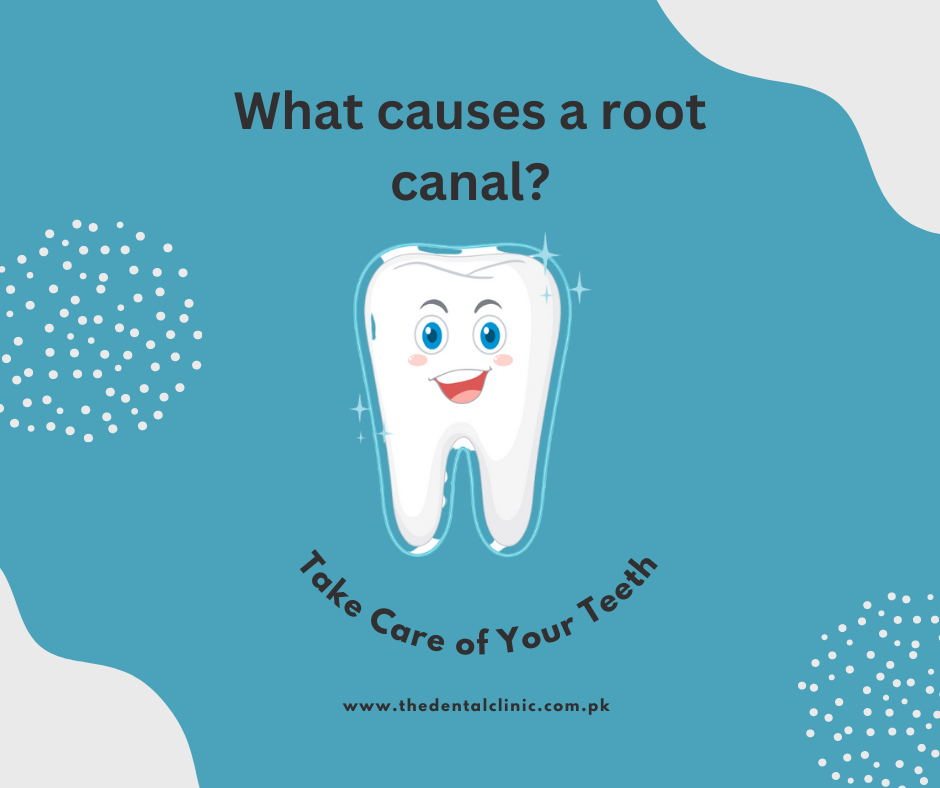
When it comes to dental care, there are some very common terms that we all must have heard of. One such term is “cavity.” You may have heard your dentist say that you have developed a cavity in your tooth, a common outcome of tooth decay. When your tooth decays, it breaks down and forms an opening on your tooth’s surface. This opening, if not treated, may advance and lead to further issues, like a root canal.
What is a root canal?
Root canal treatment, or endodontic treatment, specifically focuses on the internal part of the tooth. To grasp the concept of endodontic treatment, it is helpful to have some knowledge about the tooth’s anatomy. Inside the tooth, beneath the outer layer of white enamel and the hard layer known as dentin, lies a soft tissue called the pulp. The pulp consists of blood vessels, nerves, and connective tissue, and it contributes to the development of the tooth’s surrounding hard tissues.
The pulp extends from the crown (the visible part of the tooth) to the root’s tip, where it connects with the tissues surrounding the root. During a tooth’s growth and development, the pulp plays a crucial role. However, once a tooth is fully mature, it can survive without the pulp because it continues to receive nourishment from the surrounding tissues. To learn more about the specifics of root canal treatment, further information can be found.
What is the purpose of root canal treatment?
The purpose of root canal treatment is to eradicate bacteria from the infected root canal, prevent further infection of the tooth, and preserve the natural tooth. During a root canal procedure, the inflamed or infected pulp is extracted, and the interior of the tooth is meticulously cleaned, disinfected, filled, and sealed.
What does a root canal treatment entail?
During root canal treatment, your dentist or endodontist performs the following steps to alleviate your pain and preserve your natural tooth:
Anesthesia: Local anesthesia is administered to ensure your comfort throughout the procedure.
Access and Cleaning: A small opening is made in the tooth to access the infected or damaged pulp. The pulp is carefully removed, and the inside of the tooth is cleaned and disinfected.
Shaping and Filling: The root canals are shaped using specialized tools to create space for the filling material. The canals are then filled with a biocompatible material called gutta-percha, which seals the canals to prevent recontamination.
Restoration: After the root canal procedure, a temporary or permanent filling is placed to restore the tooth’s structure and protect it from further damage. In some cases, a dental crown may be recommended for added strength and protection.
Root canal treatment is a relatively quick and comfortable procedure. Contrary to common misconceptions, it is similar to getting a routine filling and can typically be completed in one or two appointments, depending on your tooth’s condition and individual circumstances. The procedure is highly effective and minimally painful, allowing you to resume normal activities such as smiling, biting, and chewing with ease.
What are the advantages of undergoing root canal treatment?
Preserving the natural tooth through root canal treatment offers numerous advantages, including:
– Efficient chewing capabilities.
– Restored biting force and sensation.
– Maintaining a natural appearance.
– Protection of other teeth from excessive wear or strain.
What causes a root canal?
The primary cause of a root canal treatment is when the pulp inside the tooth that contains nerves, blood vessels, and connective tissue, becomes infected or inflamed by bacteria. This causes severe pain during eating or drinking various types of hot and cold food or beverages. There are several other factors that can lead to root canal, which include;
1) Damage to the Tooth
If the tooth suffers a fracture that extends into the pulp, root canal therapy may be necessary. Moreover, a forceful impact on the tooth can lead to the severing of the nerve at the root’s end, ultimately resulting in nerve death. This becomes problematic as damaged nerve tissue breaks down, allowing bacteria to multiply within the pulp chamber. Consequently, root canal therapy becomes necessary to address the issue. Prompt professional care can help tackle tooth damage before it deteriorates.
2) Repeated Dental Procedures
Dental procedures exert considerable stress on teeth, and repeated drilling can cause inflammation of the tooth pulp. The breakdown of the pulp, coupled with bacterial growth within the pulp chamber, can lead to an infected or abscessed tooth, potentially requiring root canal therapy to resolve the problem. Prioritizing comprehensive post-treatment care significantly aids in preventing the need for retreatment.
3) Deep Decay
Similar to a damaged tooth, when tooth decay extends deep into the tooth, reaching the pulp, it can cause inflammation and bacterial infection of the pulp. Experiencing pain is an indication that endodontic treatment might be necessary. Although the infection may cause the nerves within the pulp tissues to die, relieving the pain, it does not mean the infection has been resolved. Only a dental professional can provide the necessary care to address the infection and potentially prevent the need for root canal therapy.
4) Root Resorption
Root resorption is a condition in which the tooth structure dissolves due to injury, trauma, tooth replantation, or aggressive tooth movement during orthodontic procedures. Resorption can occur from the outside inward or progress outward from the middle or inside of the tooth.
Since this problem may not be accompanied by pain, regular dental X-ray analysis by a dental professional is crucial for identifying this cause of root canal treatment.
What are the signs and symptoms that may indicate a root canal treatment?
There are several indications that could indicate the need for root canal treatment:
– Experiencing intense pain when chewing or biting.
– Presence of pimples on the gums.
– Having a chipped or cracked tooth.
– Lingering sensitivity to hot or cold temperatures, even after the stimuli have been removed.
– Swollen or tender gums.
– Noticing deep decay or darkening of the gums.
Frequently Asked Questions (FAQs)
How long does a root canal take?
The number of appointments needed for root canal therapy can vary based on the extent of infection in your tooth. Typically, root canal treatment can be completed in one or two appointments. On average, the procedure takes approximately 30 to 60 minutes. However, if you have a larger tooth with multiple roots, the treatment time may extend to around an hour and a half.
Is root canal treatment painful?
Root canal treatment is a virtually painless procedure that can effectively save a tooth that would otherwise require complete removal.
Can I eat after a root canal?
After a root canal procedure, it is typically advised to wait for the temporary filling to fully harden, which usually takes about 30 to 45 minutes. However, it is generally recommended to wait until the anesthetic has worn off before eating to avoid accidentally biting your cheek or tongue.
How much does a root canal cost?
In Pakistan, the average cost of a root canal procedure typically falls between PKR 15,000 and 35,000. The exact cost varies depending on factors such as the specific tooth requiring treatment and its location within the mouth.
Can I drive myself home after a root canal?
In most cases, if you did not receive any sedation or only nitrous oxide (laughing gas) for your root canal treatment, you should be able to drive yourself home. However, if you underwent conscious oral sedation, it is necessary to arrange for someone else to drive you to and from your appointment.







